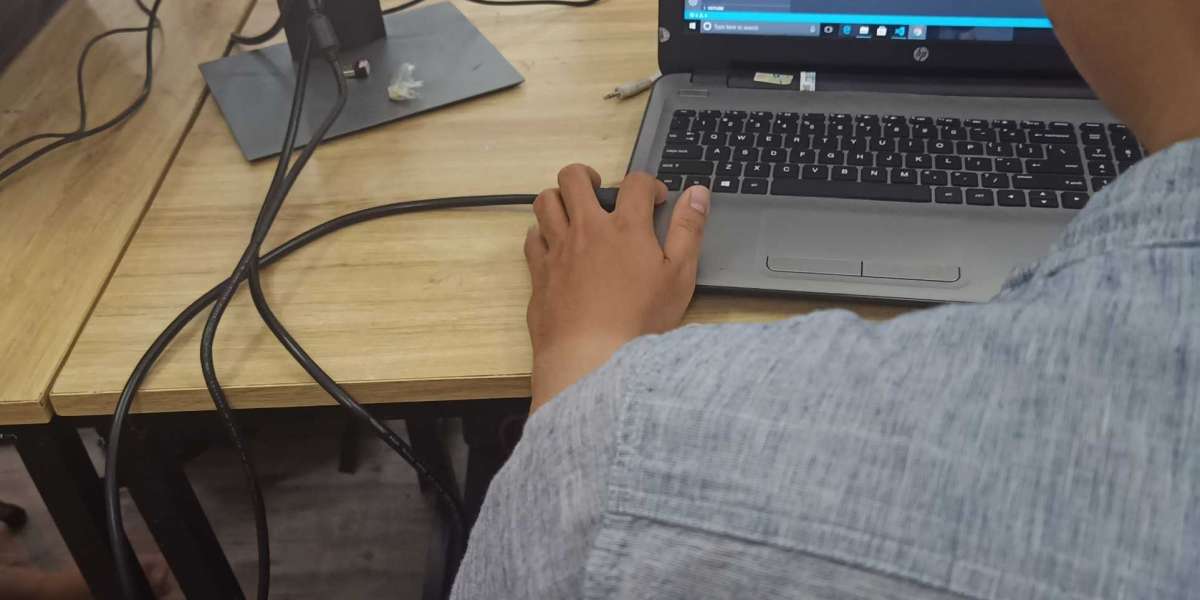Introduction
Polycaprolactone (PCL) is a biodegradable polyester that is gaining attention due to its versatile applications in various industries, including pharmaceuticals, bioplastics, biomedical devices, and the automotive sector. PCL is known for its excellent biodegradability, biocompatibility, and moldability, which makes it a desirable material for both industrial and medical applications. The increasing focus on sustainable and eco-friendly materials is driving demand for PCL as it offers an alternative to conventional plastics that are non-biodegradable. The establishment of a Polycaprolactone Manufacturing Plant involves a well-planned approach, requiring substantial investment in machinery, raw materials, skilled labor, and compliance with industry standards. This Polycaprolactone Manufacturing Plant Project Report provides an in-depth analysis of the steps involved in setting up a PCL manufacturing facility, including market demand, production process, sourcing of raw materials, equipment needs, financial planning, and regulatory compliance.
Market Analysis and Demand
The global demand for polycaprolactone has been steadily increasing, driven by its growing applications in a variety of sectors. Below is a breakdown of key drivers contributing to the rising demand for PCL:
Pharmaceutical and Biomedical Applications: Polycaprolactone is widely used in the pharmaceutical industry for the production of drug delivery systems, tissue engineering scaffolds, and biodegradable sutures. Its ability to degrade safely in the body without toxicity makes it ideal for biomedical applications.
Biodegradable Plastics: As environmental concerns over plastic pollution continue to grow, PCL is being increasingly considered as an alternative material to traditional plastics. Its biodegradability makes it a sustainable choice for packaging, disposable cutlery, and other single-use plastic products.
3D Printing: PCL has also found a growing application in the 3D printing industry due to its low melting point and ease of use. It is often used in creating prototypes, medical models, and even customized implants for medical applications.
Automotive Industry: PCL is also used in automotive parts that require high-performance materials with good environmental resistance. It can be employed in non-load-bearing components and certain automotive seals.
Rising Awareness of Sustainable Products: With increasing global focus on sustainability and environmental protection, the demand for biodegradable and renewable materials like polycaprolactone is expected to grow.
In addition to these established applications, ongoing research and development in the use of PCL in nanotechnology, coatings, and agriculture further fuel its potential market growth.
Get a Free Sample Report with Table of Contents@
Raw Materials and Sourcing
Polycaprolactone is synthesized through the polymerization of ε-caprolactone, a cyclic ester. The production process requires specific raw materials, including:
ε-Caprolactone (C6H10O2): The primary raw material for PCL production, ε-caprolactone is a cyclic monomer that is polymerized to form the polymer. This material can be derived from petrochemical feedstocks or renewable resources, depending on the desired sustainability profile.
Catalysts: Specific catalysts, such as tin-based or aluminum-based catalysts, are used to initiate the polymerization process. These catalysts help control the polymerization rate and ensure the desired molecular weight and properties of the PCL.
Solvents: In some cases, organic solvents such as toluene or xylene are used during the polymerization process to help dissolve the monomers and facilitate the reaction.
Additives: Various additives may be introduced to improve the properties of the final polymer, such as stabilizers, plasticizers, or crosslinking agents.
Sourcing high-quality ε-caprolactone and reliable catalysts is crucial for ensuring efficient and high-quality PCL production. Establishing partnerships with reputable suppliers is essential to maintain a steady supply of raw materials at competitive prices.
Manufacturing Process
The manufacturing of polycaprolactone involves several key steps, primarily focused on the polymerization of ε-caprolactone monomers into a polymer chain. Below is an overview of the PCL production process:
1. Polymerization of ε-Caprolactone
The first step in PCL production is the polymerization of ε-caprolactone. This is typically achieved using anionic or catalytic polymerization processes:
Anionic Polymerization: In this method, an initiator molecule reacts with ε-caprolactone to start the polymerization process, forming a polymer chain. The process is often carried out in the presence of solvents to ensure the monomer and catalyst react properly.
Ring-Opening Polymerization (ROP): A more common method used to produce PCL is ring-opening polymerization, where the ε-caprolactone monomer is heated in the presence of a catalyst. This reaction opens the lactone ring, creating a linear polymer chain of PCL.
The polymerization is carried out under controlled temperature and pressure conditions, with the catalyst controlling the reaction rate and molecular weight of the polymer.
2. Polymer Purification
Once the polymerization is complete, the resulting polycaprolactone is purified to remove any unreacted monomers, solvents, or catalysts. This is typically done through a combination of washing, filtration, and drying processes. The purified PCL is then processed into a usable form, such as powder, pellets, or granules.
3. Pelletizing and Granulation
The purified PCL is then processed into small pellets or granules, which are easier to handle, store, and transport. Pelletizing machines are used to form uniform-sized pellets, which are then cooled and solidified.
4. Compounding and Blending
In some cases, additives such as plasticizers, stabilizers, or colorants are mixed into the PCL polymer to enhance its properties. This step involves blending the PCL with the desired additives in a twin-screw extruder, ensuring that the final product meets the desired specifications for various applications.
5. Forming and Shaping
Depending on the intended use of the PCL, the material may be further processed into specific shapes or forms. This can include extrusion, molding, or 3D printing processes to create products such as films, fibers, or custom-designed components.
6. Quality Control and Testing
Once the PCL is processed, it undergoes thorough quality control testing. These tests ensure that the polymer meets the required standards for mechanical properties, biodegradability, and other performance criteria. Common tests include tensile strength, molecular weight distribution, melting point determination, and biodegradation rate testing.
Required Infrastructure and Equipment
To establish a Polycaprolactone Manufacturing Plant, the following infrastructure and equipment are essential:
1. Production Facility Layout
- Raw Material Storage: Areas for storing ε-caprolactone, catalysts, and other chemicals in a safe and controlled environment.
- Polymerization Zone: A dedicated area for polymerization reactors, where the chemical reactions take place.
- Purification Area: A space for cleaning and removing residual solvents or monomers from the polymer.
- Compounding and Blending Area: Equipment for mixing additives and achieving the desired polymer blend.
- Quality Control Lab: A laboratory for conducting rigorous testing of the PCL’s physical, chemical, and biological properties.
2. Essential Equipment
- Polymerization Reactors: High-pressure or low-pressure reactors designed for ring-opening polymerization of ε-caprolactone.
- Dryers: For removing excess moisture or solvents from the final polymer.
- Pelletizing Equipment: For converting the polymer into pellets or granules.
- Extruders: For shaping the polymer into films, fibers, or other products.
- Blenders: For compounding PCL with additives to enhance its properties.
- Quality Control Instruments: For testing polymer quality, including tensile testing machines, melting point apparatus, and biodegradation testing equipment.
Cost Analysis and Financial Planning
Setting up a Polycaprolactone manufacturing facility requires significant capital investment. Here’s a breakdown of potential costs involved in the establishment and operation of the plant:
1. Capital Investment
- Land and Facility Construction: The cost of purchasing land and building the manufacturing facility.
- Machinery and Equipment: The cost of acquiring the necessary equipment for polymerization, pelletizing, and compounding.
- Regulatory Compliance: Expenses related to obtaining necessary licenses, safety approvals, and environmental compliance.
2. Operational Costs
- Raw Materials: The cost of sourcing ε-caprolactone, catalysts, and other chemicals.
- Labor: Wages for skilled technicians, machine operators, quality control personnel, and administrative staff.
- Utilities: Costs associated with electricity, water, and heating for the manufacturing processes.
- Maintenance and Repairs: Ongoing costs for maintaining equipment and ensuring smooth operations.
3. Revenue Generation
Revenue for a PCL manufacturing plant will primarily come from selling the produced polycaprolactone to industries such as pharmaceuticals, automotive, packaging, and 3D printing. Pricing strategies will depend on production costs, market demand, and competitive factors.
Regulatory Compliance and Environmental Considerations
As with any manufacturing process, the production of polycaprolactone is subject to various regulations. Compliance with safety, environmental, and industry-specific standards is critical for the successful operation of the plant:
Environmental Regulations: Waste disposal, solvent management, and air emissions control are important to ensure minimal environmental impact. PCL’s biodegradability gives it an advantage in terms of environmental compliance.
Safety Standards: Ensuring that workers are protected from hazardous chemicals and machinery is essential, and plant workers should be trained in safe handling procedures.
Product Quality Certifications: Obtaining certifications such as ISO and Good Manufacturing Practices (GMP) for the final product will help establish credibility in the market and comply with industry standards.
Media Contact
Company Name: Claight Corporation
Contact Person: Lewis Fernandas, Corporate Sales Specialist — U.S.A.
Email: sales@expertmarketresearch.com
Toll Free Number: +1–415–325–5166 | +44–702–402–5790
Address: 30 North Gould Street, Sheridan, WY 82801, USA
Website: www.expertmarketresearch.com
Aus Site: https://www.expertmarketresearch.com.au














